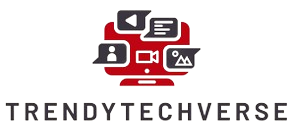Creating an effective resume for an IT career can significantly boost your chances of standing out in the competitive tech industry. This comprehensive guide will help you craft a compelling resume that showcases your technical skills, experience, and accomplishments in a way that appeals to potential employers.
1. Understand the Basics of a Strong IT Resume
Before diving into the specifics, it’s essential to understand the key components of a strong IT resume. Here are the major sections:
- Header: Includes your name, contact information, and LinkedIn profile.
- Objective or Summary: A brief statement that highlights your career goals and key qualifications.
- Technical Skills: A list of your technical competencies, tools, and technologies you are proficient in.
- Professional Experience: Detailing your past job roles, achievements, and responsibilities.
- Education: Information about your academic background and relevant certifications.
- Projects: Notable projects you’ve worked on, showcasing your hands-on experience.
- Additional Information: Any other relevant details such as languages, hobbies, or volunteer activities.
Table: Key Sections of an IT Resume
| Section | Description |
|---|---|
| Header | Your name, contact details, and LinkedIn profile |
| Objective or Summary | A brief statement of career goals and qualifications |
| Technical Skills | List of technical competencies and tools |
| Professional Experience | Details of past roles, responsibilities, and achievements |
| Education | Academic background and certifications |
| Projects | Notable projects showcasing hands-on experience |
| Additional Information | Other relevant details like languages or hobbies |
2. Crafting Your Resume Header
Your resume header should be concise, featuring only essential information. Include your full name, email address, phone number, and a link to your LinkedIn profile or personal portfolio. Make sure your email address is professional, and avoid using nicknames or casual usernames.
3. Writing an Impactful Objective or Summary
The resume objective or summary serves as the introduction to your resume. It should briefly outline your career goals and highlight your key qualifications. For an IT professional, focus on your technical expertise, experience in the industry, and any standout achievements. Tailor this section to match the job you’re applying for, emphasizing the skills and experiences that make you a strong candidate.
4. Highlighting Your Technical Skills
Technical skills are a critical component of an IT resume. Create a dedicated section where you list your technical competencies, including programming languages, tools, software, and technologies you’re proficient in. It’s often helpful to categorize these skills for better clarity. Example:
- Programming Languages: Java, Python, C++
- Web Technologies: HTML, CSS, JavaScript, React
- Databases: SQL, MongoDB
- Tools: Git, Docker, Jenkins
- Operating Systems: Linux, Windows
Update this section regularly to include new skills and remove outdated ones.
5. Detailing Your Professional Experience
This is arguably the most critical part of your resume. List your previous job roles in reverse chronological order, starting with the most recent position. For each job, include the following details:
- Job Title
- Company Name
- Location
- Dates of Employment
- Responsibilities and Achievements
Focus on your accomplishments rather than simply listing responsibilities. Use action verbs and quantify your achievements where possible. For example:
Software Developer, XYZ Corp
San Francisco, CA | June 2018 – Present
- Developed and implemented new features for the company’s main product, resulting in a 20% increase in user engagement.
- Collaborated with cross-functional teams to design and optimize database schemas, improving data retrieval speeds by 35%.
- Led a team of 5 developers in the successful migration of legacy systems to modern web technologies.
Tailor this section to highlight experiences that are relevant to the job you’re applying for.
6. Emphasizing Your Educational Background
Include details about your academic qualifications, listing them in reverse chronological order. Provide the name of the institution, degree obtained, and the years attended. Mention any honors or relevant coursework related to IT. Example:
Bachelor of Science in Computer Science
University of Technology, 2014 – 2018
If you have attained any industry certifications, include them in this section as well. Certifications from recognized institutions can significantly bolster your IT resume.
7. Showcasing Your Projects
Projects can showcase your practical experience and technical acumen. For each project, include a brief description, the technologies used, and your role in the project. Example:
Online Portfolio Website
Languages used: HTML, CSS, JavaScript, React
Description: Developed a personal portfolio website to showcase my projects, enhancing my web development skills and providing a platform to display my work.
8. Additional Information
In this section, include any other relevant details that can add value to your resume. This might include languages spoken, volunteer work, hobbies, or any professional memberships. For example:
- Fluent in Spanish and French
- Volunteered as a coding instructor for a local non-profit organization
- Member of the Association for Computing Machinery (ACM)
9. Formatting and Design Tips
An IT resume should be clean, well-structured, and easy to read. Here are some formatting tips:
- Use a professional and straightforward font like Arial, Calibri, or Times New Roman.
- Keep the font size between 10 and 12 points for body text and 14 to 16 points for headers.
- Use bullet points for easy reading and to break up large blocks of text.
- Include enough white space to make the resume easy on the eyes.
- Save and send your resume as a PDF to preserve the formatting.
10. Tailoring Your Resume for Each Job Application
It’s crucial to tailor your resume for each job application. Carefully read the job description and highlight the keywords and skills mentioned. Make sure to incorporate these keywords naturally into your resume. Adjust the objective or summary to align with the specific role and focus on your most relevant experiences and achievements. This effort can significantly increase your chances of getting noticed by applicant tracking systems (ATS) and hiring managers.
11. Proofreading and Editing
Before submitting your resume, take the time to proofread and edit carefully. Look for grammatical errors, typos, and inconsistencies. Consider asking a friend or mentor to review your resume and provide feedback. A polished and error-free resume reflects your attention to detail and professionalism.
12. Using Online Tools and Resources
Leverage online tools and resources to enhance your resume further. Websites like LinkedIn, GitHub, and Stack Overflow can complement your resume by showcasing your professional network, projects, and contributions to the tech community. Additionally, consider using resume-building tools that offer pre-designed templates and formatting assistance.
Conclusion
Creating an effective IT resume requires careful planning, attention to detail, and a focus on your strengths and accomplishments. By understanding the key components and following the tips outlined in this guide, you can develop a resume that stands out to potential employers and helps you land your dream job in the IT industry.

